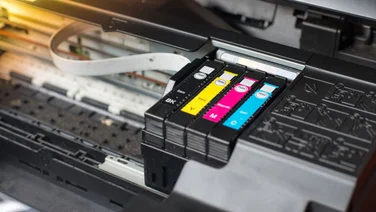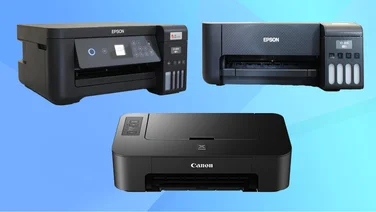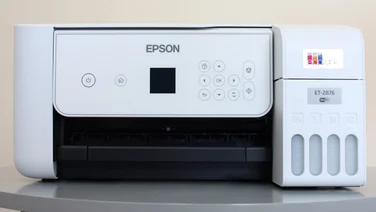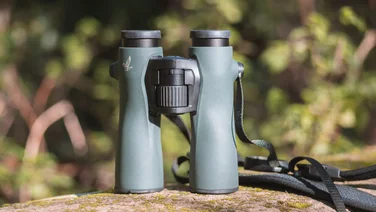To help us provide you with free impartial advice, we may earn a commission if you buy through links on our site. Learn more





Update: The Canon EOS 550D was a great budget DSLR in its day, but it’s long been discontinued and it’s debatable whether it’s worth your while buying one, even used these days. New models boast improved image quality, the ability to record up to 4K video quality, articulated screens and improved autofocus systems. The fact it’s so old means that, even on the used market, there are better options than the Canon EOS 550D but you don’t have to go down the used route if you don’t want to.
You can pick up one of Canon’s current budget cameras for not much more. In particular, there’s the Canon EOS 1300D with its 18-55mm kit lens for around £320 or the Canon 100D with a similar lens for a similar amount. Or you could try a Nikon D3300 or Nikon D3400 for a little bit more money.
But if you can lay your hands on a 550D for significantly less than this, it’s a great camera to cut your teeth on, or in fact to find out of you really want to get into DSLR photography in the first place.
Our full original Canon EOS 550D review follows below.
Canon EOS 550D review: In full
Canon’s triple-digit EOS cameras have long been the yardstick by which consumer digital SLRs are measured. The 550D is fairly pricey, but with the same 18-megapixel resolution, metering system and 1080p video mode as the upmarket 60D and 7D, it’s more of a cut-price enthusiasts’ model than an overpriced entry-level SLR.
The sophisticated 63-point iFCL metering system is the same as the 7D’s, and it’s much better than the older 500D’s 35-point system. It uses two sensors to gather the colour and luminance information that helps to calculate the correct exposure settings. It also takes subject distance information from the auto-focus system and balances the exposure based on that.

The single DIGIC 4 image processor reduces the 550D’s burst rate to 3.7fps, down from 8fps on the 7D, but up from the 500D’s 3.4fps. The 550D can shoot 34 fine JPEG or six RAW frames at this speed. That’s fewer that the 500D’s 170 fine JPEG or nine RAW frames.
The 550D supports a range of shutter speeds from 30 seconds to 1/4,000th of a second, as well as a bulb mode for longer exposures. ISO sensitivity ranges from 100 to 6400 and is expandable to 12800. The auto-focus system has nine points, with the centre being a cross-type f/5.6 point with extra sensitivity at f/2.8. Most of the time the AF system worked well and focuses very quickly, but occasionally we found that it would front focus. This is where the camera focuses slightly in front of your intended subject and is the same issue we saw with both the 450D and 500D. It isn’t a major problem if you’re using relatively small apertures, but if you’re looking to buy fast glass (with a maximum aperture of f/2.8 or larger), it’s something to watch out for.
The control layout hasn’t changed much and the menu system is largely the same. The 550D still has only one control dial, meaning you’ll need to use the AV+/- button to control aperture in manual mode, or to apply exposure compensation in another mode. Canon says it has made the buttons larger in response to user feedback and has also added a “Q” (Quick Control) button just above the navigation controls, enabling users to make changes directly on the camera’s 3.0in screen.
The most noticeable external change is the 3.0in screen. It has a 3:2 aspect ratio – the same as the sensor – and a 1,024,000 dot resolution, meaning it’s the highest-resolution camera LCD to date. As a result, information isn’t crammed into the black strips along the top and bottom of the screen and is instead overlaid. At first, we weren’t so keen on this, but having used it more, it’s a definite improvement.
The 550D is one of the cheapest large-sensor camera to offer full control over the aperture, shutter speed, ISO speed and frame rate in video mode – a critical feature for creative videographers. Quality was excellent, with crisp details, rich colours, barely any noise and no sign of compression artefacts, thanks to the AVC codec and massive 45Mbit/s bit rate. The resulting files are huge, though, and require a fast PC for playback and editing. It also means that the 4GB file limit equates to around 12 minutes of video at 24fps. There’s no countdown to warn when recording is about to stop.
Sound quality from the internal mono microphone was excellent, and there’s a stereo minijack for an external microphone. Autofocus during video recording was terrible, though. The focus darted back and forth like a learner driver trying to reverse park, the soundtrack was obliterated with lens motor noise and manual exposure settings were interrupted as the camera adjusted the image to assist the autofocus. Creative videographers will be happy to focus manually but this video mode isn’t for casual use. We also found that inadequate anti-aliasing sometimes created moiré patterns and odd motion in dense textures – something that won’t bother casual users but is more of an issue for discerning use.

As a stills camera, the 550D excelled for image detail while maintaining extremely low noise. Photos tended towards over-exposure but there’s ample scope to fine-tune the camera’s behaviour. There aren’t masses of controls but they’re used efficiently to keep key settings close to hand. Performance is solid rather than exceptional, with the 3.6fps continuous mode slowing to 2.3fps after 24 JPEGs in our tests.
We’ve reported on slight autofocus problems with the 550D and its predecessors. This time, having the 550D, 60D, 18-55mm lens and 18-135mm lens together allowed us perform some controlled tests. We used all four permutations of camera body and lens and, using a tripod and the centre AF point only, shot using phase-detect autofocus followed by live view’s contrast-detection autofocus at a variety of distances and focal lengths.

With the 550D and 18-55mm lens, six out of seven shots were softer with phase-detect autofocus than contrast-detect. Switching to the 18-135mm lens, the problem disappeared. It reappeared slightly with the 60D and 18-55mm lens and disappeared again with the 60D and 18-135mm lens. It’s clear that the 18-55mm lens is to blame – we’d strongly recommend avoiding it. The 550D and 18-135mm lens costs £789 from Jessops.
The 550D doesn’t do enough to warrant an award but – with the right lens – it’s very much a safe bet. Photo quality is exceptional and videos are too as long as you don’t need continuous autofocus. It’s the natural choice for more creative users who can’t justify spending over £1,000.










